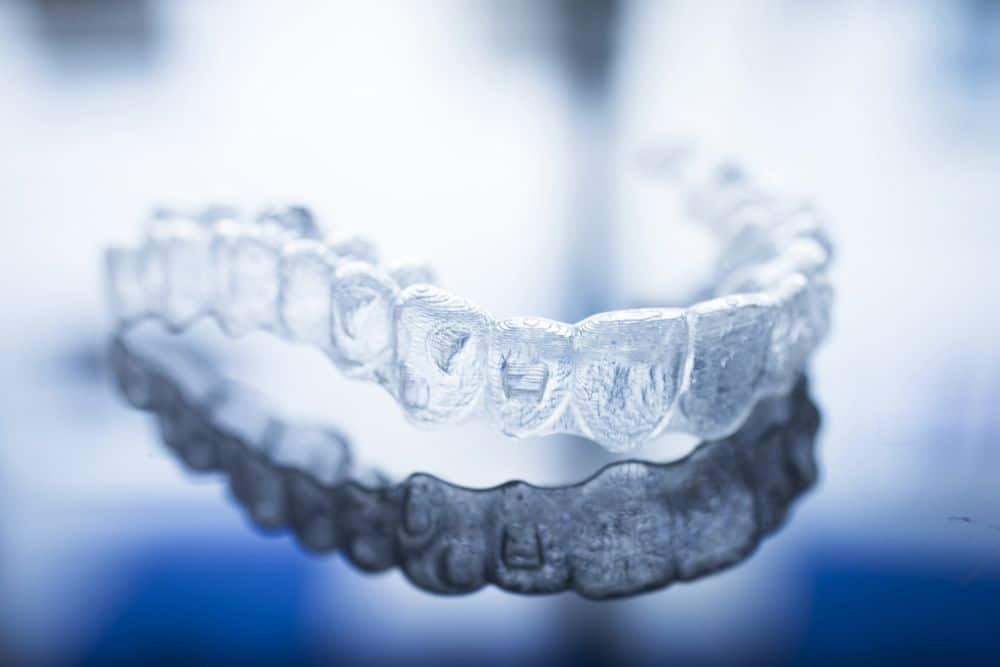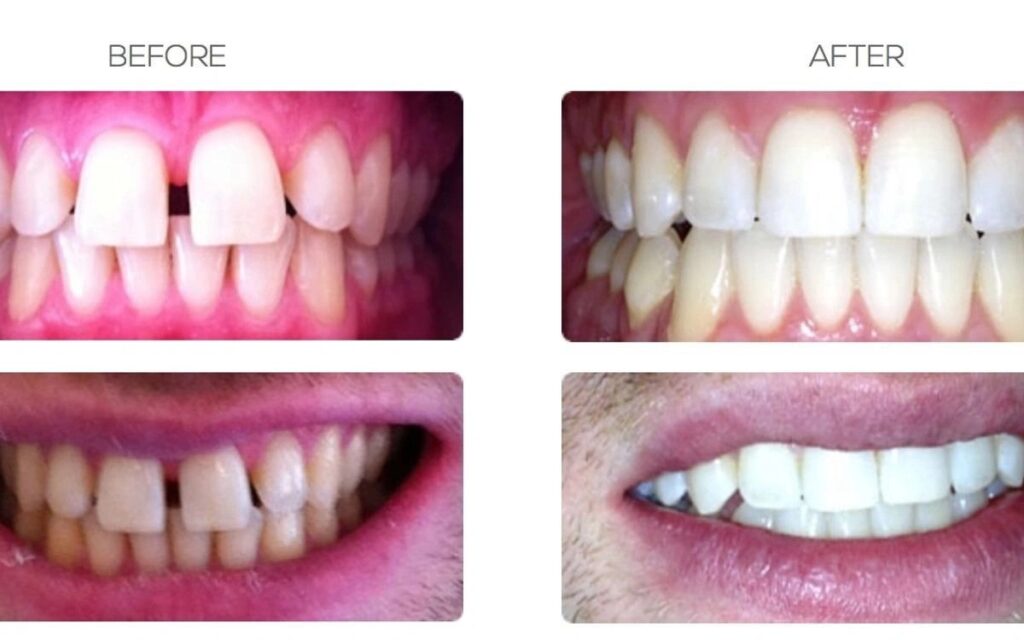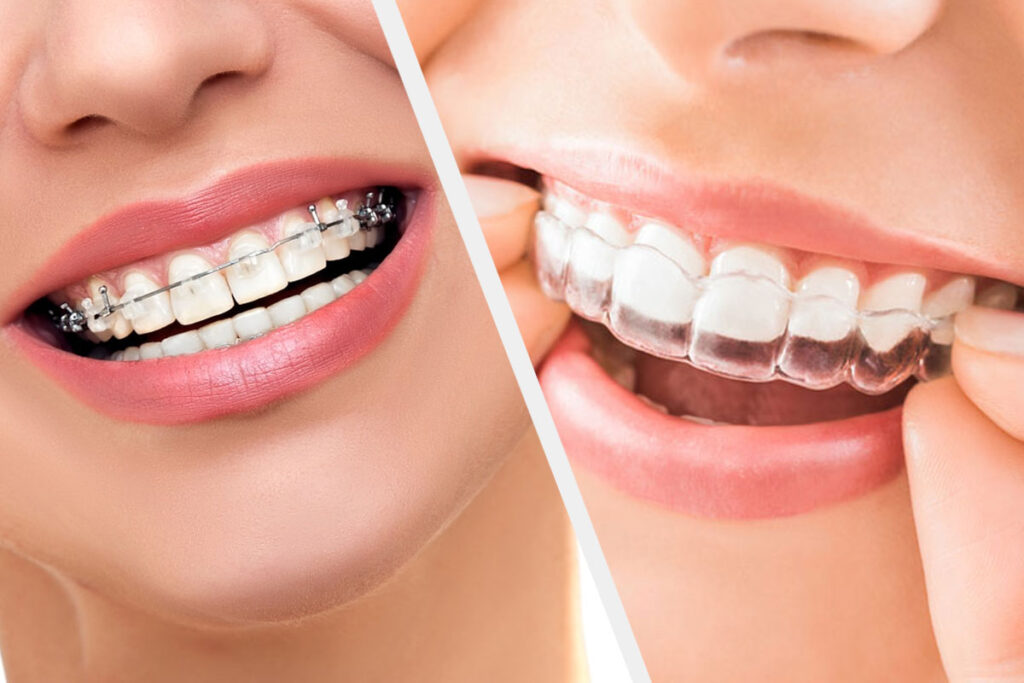When it comes to achieving a confident, straight smile, the question most people ask is simple: should I choose Invisalign or traditional braces? Both treatments can deliver excellent results, but the best choice depends on your dental condition, lifestyle, and priorities.
At Chagger Dental, our orthodontic team has years of experience helping patients in Ontario decide which path works best for them. In this complete guide, we’ll explain how Invisalign works, the different types available, the costs involved, and how it compares to braces in terms of comfort and results.
How Invisalign Works
Invisalign is a system of clear, removable aligners designed to gradually move your teeth into the correct position. Each aligner is worn for about two weeks before switching to the next one in the sequence. Using digital scans, your orthodontist creates a precise 3D model of your teeth to plan every stage of movement.
The key advantage? Invisalign aligners are almost invisible. You can take them out when eating, brushing, or for special occasions. This makes them one of the most comfortable and discreet orthodontic treatments available.

The Different Types of Invisalign
Not all Invisalign treatments are the same. Depending on your needs, your dentist may recommend one of several systems designed to fit different cases and timelines.
1. Invisalign Express
This is the shortest and fastest version of Invisalign, typically lasting around 3 to 4 months. It’s designed for patients with very minor alignment issues or those who previously had orthodontic treatment but experienced slight relapse. Invisalign Express uses a maximum of 10 aligners to correct small gaps, crowding, or subtle misalignments.
2. Invisalign Lite
Invisalign Lite is perfect for mild to moderate orthodontic issues. It usually takes 6 to 8 months and involves fewer aligners compared to the full system. This makes it a more affordable and time-efficient option for people who need moderate corrections to achieve a balanced smile.
Common cases suitable for Invisalign Lite include:
• Crooked or slightly crowded front teeth
• Minor spacing between teeth
• Small misalignments after previous braces or aligner treatments
3. Invisalign Full or Comprehensive
This is the standard Invisalign treatment, recommended for complex cases involving bite correction, significant crowding, or spacing. Treatment time typically ranges from 12 to 18 months, depending on your individual case. Invisalign Full offers the most control over tooth movement and can achieve results similar to traditional braces.
4. Invisalign Teen and Invisalign First
These systems are specifically designed for younger patients. Invisalign Teen helps teenagers straighten their teeth comfortably without metal brackets, while Invisalign First is made for children, guiding tooth and jaw development early on.
Traditional Braces: The Classic Approach
Before clear aligners existed, braces were the trusted solution for straightening teeth — and they remain a powerful option today. Modern braces are more advanced and comfortable than ever, offering reliable results for patients with complex orthodontic needs.
How Braces Work
Braces use a system of brackets and wires attached to your teeth to apply gentle, continuous pressure that gradually moves them into the desired position. Your orthodontist periodically adjusts the wires to control tooth movement and alignment.
Types of Braces
There are several types of braces available in Ontario:
• Metal Braces – The most traditional and cost-effective option. They are strong, reliable, and suitable for all levels of misalignment.
• Ceramic Braces – Similar in function to metal braces but use clear or tooth-coloured brackets for a more discreet look.
• Lingual Braces – Placed behind the teeth, these are completely hidden from view, though they can take longer to get used to.
Benefits of Braces
• Ideal for treating complex bite issues, including severe overbites, underbites, and rotations.
• Fixed in place, so they don’t require daily removal or patient compliance.
• Provide precise control over tooth movement.
• Suitable for children, teens, and adults.
Drawbacks of Braces
While braces are highly effective, they are more visible than Invisalign and can sometimes cause irritation inside the mouth. Maintaining oral hygiene also requires more care, as food particles can get trapped around the brackets and wires. Regular adjustments are needed, but these visits are an important part of achieving optimal results.
Comparing Invisalign and Traditional Braces
Appearance
Invisalign aligners are virtually invisible, making them an excellent choice for adults and professionals who prefer a discreet option. Braces, on the other hand, are more visible, although ceramic braces offer a subtler appearance.
Comfort
Invisalign aligners are made of smooth plastic, which means no sharp wires or brackets to irritate your cheeks or gums. Braces can cause some soreness, especially after adjustments, though most patients adapt quickly.
Hygiene and Maintenance
Since Invisalign is removable, you can brush and floss as usual. Braces require more effort to clean around wires and brackets, which can increase the risk of plaque buildup if not properly maintained.
Effectiveness
Both Invisalign and braces are effective, but braces are often recommended for more complex bite issues, while Invisalign works best for mild to moderate alignment problems.
Duration
The average treatment time for Invisalign ranges between 6 and 18 months, depending on the system used. Traditional braces usually take 18 to 24 months, and more complex cases can take longer.
Orthodontic Treatment Costs in Ontario
Many people wonder how much orthodontic treatment costs in Ontario. The truth is, pricing depends on several factors, including case complexity, treatment type, and the experience of your orthodontist. However, here’s a general guide to help you understand the average costs across the province:
Orthodontic Treatment Estimated Cost (CAD)
Metal Braces ($3,000 – $8,000 or more)
Ceramic Braces ($4,000 – $8,000)
Lingual Braces ($8,000 – $10,000)
Invisalign Aligners ($4,000 – $7,500)
While Invisalign may seem slightly more expensive than traditional braces, many patients consider it a worthwhile investment for its comfort, aesthetics, and flexibility. Some dental insurance plans in Ontario cover part of the cost of Invisalign, especially for Lite or Express treatments. It’s always a good idea to check your coverage with your provider or ask our team for assistance during your consultation.
Before and After: What to Expect
The transformation with Invisalign can be remarkable. Patients often start noticing visible improvements within a few weeks, and the Invisalign before and after results show how effective the system is in achieving natural, beautifully aligned smiles.

Once your treatment ends, you’ll move into the retention phase, which involves wearing clear retainers at night to maintain your results. These retainers are just as comfortable and transparent as your aligners.
Caring for Your Aligners
To keep your Invisalign aligners clean and clear:
• Remove them before eating or drinking anything except water.
• Brush your teeth before putting them back in.
• Rinse and gently brush your aligners daily using a soft toothbrush and mild soap.
• Always store them in their case when not in use.
Avoid biting down on hard foods while wearing aligners and refrain from using hot water to clean them, as it can warp the plastic.
Choosing the Right Option for You
If you’re deciding between Invisalign and braces, think about your lifestyle, treatment goals, and comfort level.
• If you prefer a discreet, flexible solution and can commit to wearing aligners 22 hours a day, Invisalign could be perfect.
• If your case requires more complex correction or you’d prefer a treatment you don’t need to manage daily, braces may be better.
The best way to know for sure is to schedule an orthodontic consultation. At Chagger Dental, our team uses advanced imaging to evaluate your bite and recommend the most effective and comfortable solution for your smile.
The Bottom Line
Both Invisalign and braces can deliver lasting, beautiful results. The key is choosing the method that best fits your needs and lifestyle. Whether you need a quick cosmetic fix with Invisalign Express, a moderate correction with Invisalign Lite, or full orthodontic braces for complex alignment, the right treatment can give you the confident smile you’ve always wanted.
Book your consultation today at Chagger Dental to discover which orthodontic solution is best for you. Our friendly team in Ontario will guide you every step of the way — from your first digital scan to your final smile.



















